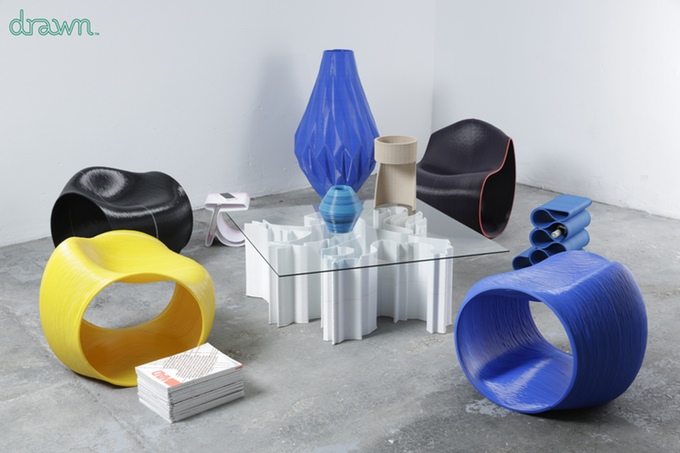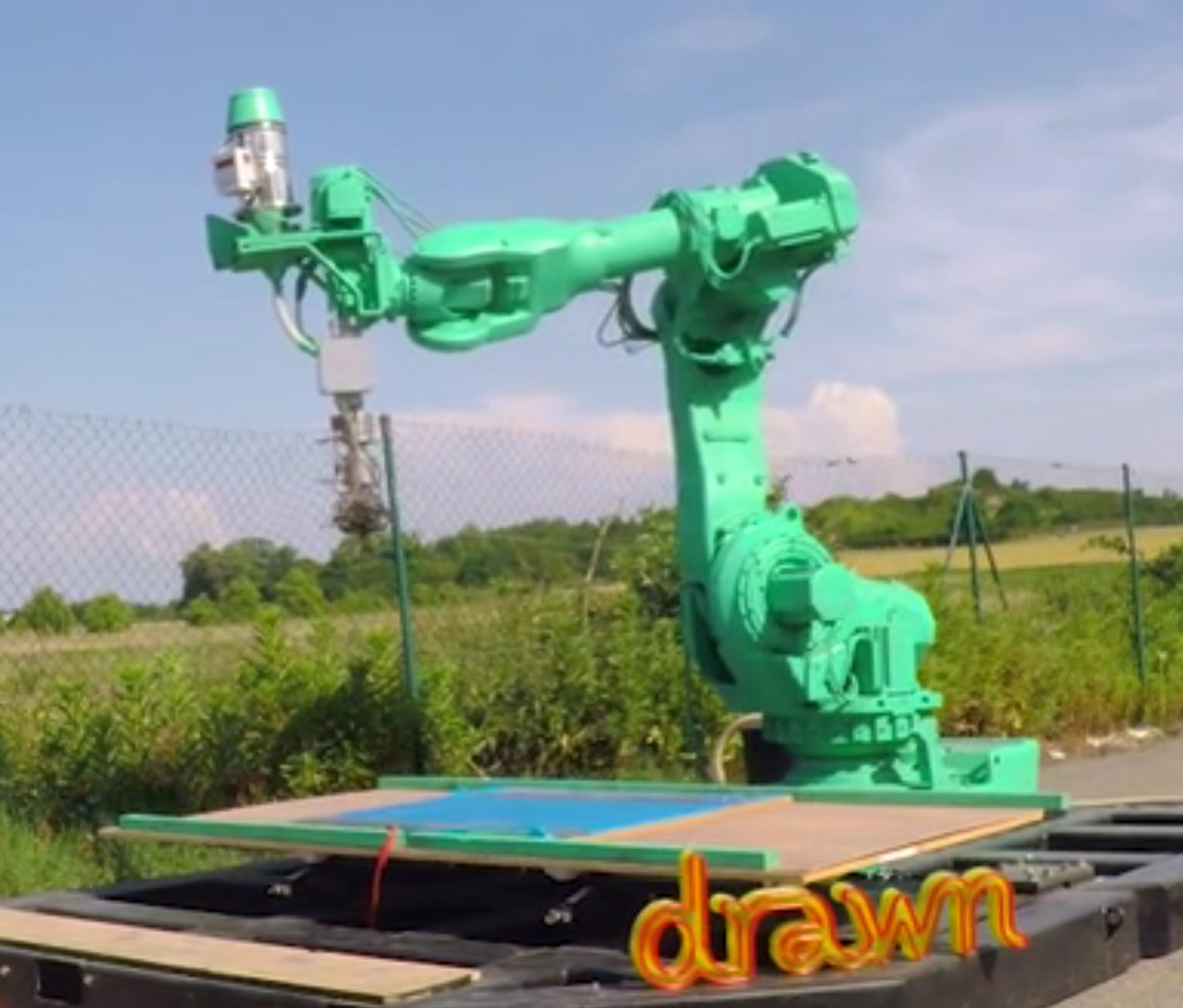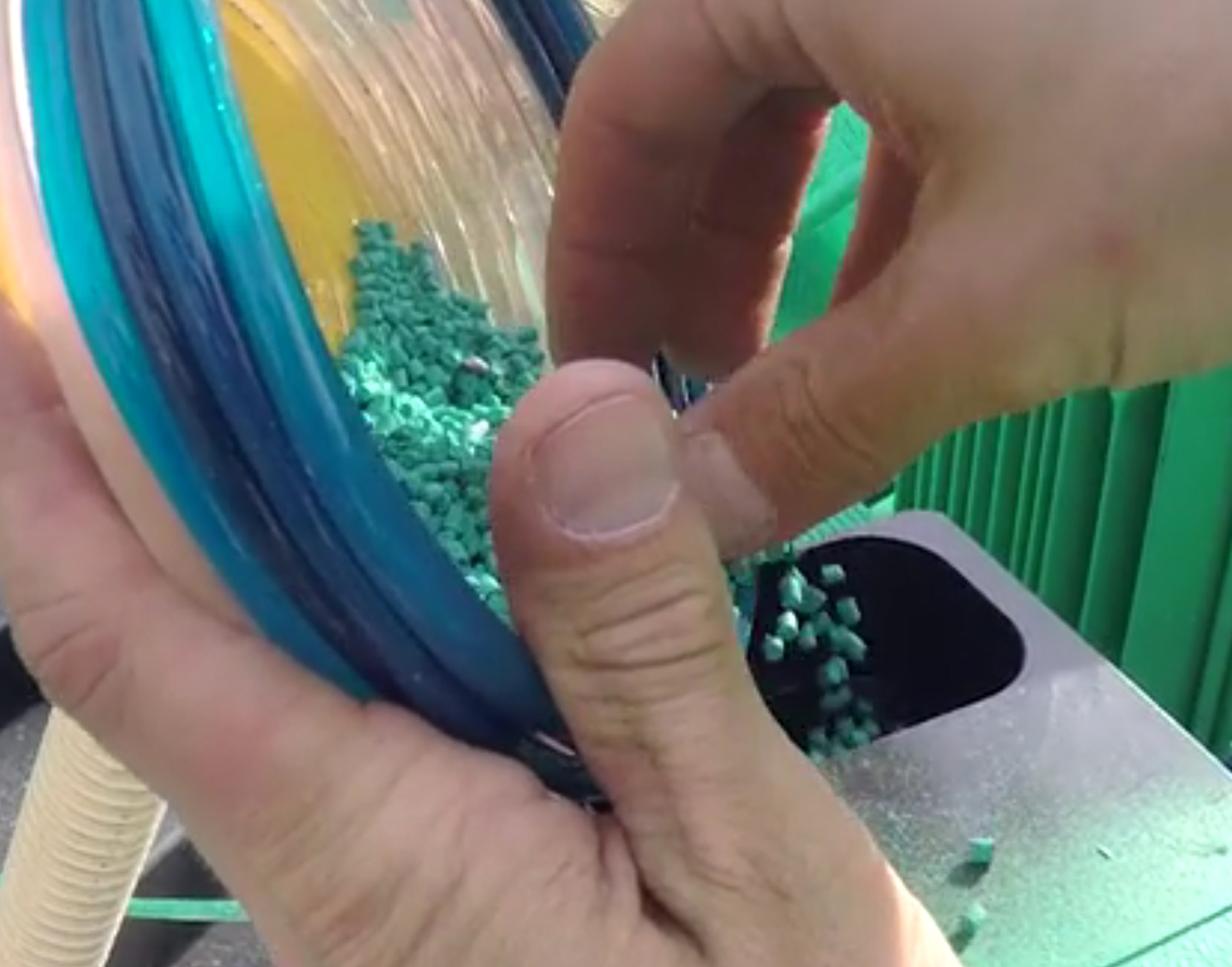France-based Drawn has developed a line of 3D printed furniture using a robotic printing approach.
The company’s “main asset” is a repurposed industrial robot, named “Galatéa”, which they’ve converted into a 3D printer by installing an extruder on the active end of the robot arm. This approach to 3D printing has been done before, but it hasn’t proven particularly popular, mainly because of the cost of industrial robots, which can be over USD$100,000 in some cases. Drawn was able to procure a robot inexpensively, as it was “found in a dismantling automobile factory”. But if it works, it works, and thus their company was then powered by a massive 3D printer.
Then the creative part begins: Galatéa’s capabilities enable the production of larger 3D printed pieces, and the company has chosen to focus on furniture.
We’ve previously seen large-scale 3D printed furniture, but they were simply experiments or single-unit art pieces. Drawn intends on producing custom 3D printed furniture for clients. And by “custom” they mean it:
Thanks to unique Galatea’s process, drawn can offer customization for each piece! Therefore, clients get involved in the process from the creation of the piece to the production as a show. For instance, a chair with original shapes will only take 2 hours to be printed.
Galatéa prints in relatively coarse layers, as see in this closeup of a print. While this produces rough surface textures, that’s not a bad thing: the textures can become a trademark feature of their designs. And it also enables very quick printing, too.
The robotic printer does not use plastic filament, although it does use ABS plastic, as far as we can tell. It uses a pellet approach, which enables large amounts of material to be quickly delivered to the hot end. Pellets are also substantially less expensive than filament, also a good thing.
We believe this to be a unique offering, as few industrial robot 3D printers exist, so the company may have found a secure niche to build a larger business upon. For now, they’re seeking funds to enable them to show their 3D printed products at appropriate trade shows to generate additional sales.
If they’re very successful, they may need to find another robot!
Via Kickstarter





